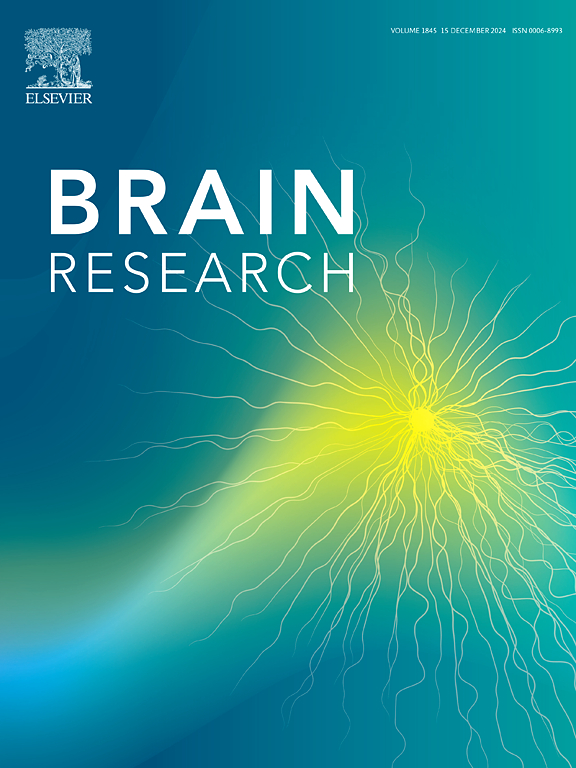Decoding the molecular and cellular aspects of multiple sclerosis: From diagnosis to therapeutic strategies
IF 2.6
4区 医学
Q3 NEUROSCIENCES
引用次数: 0
Abstract
Multiple sclerosis (MS) is a multifaceted, chronic neuroinflammatory condition of the central nervous system (CNS) marked by demyelination, gliosis, and axonal degradation. Despite the comprehensive investigation, the exact etiology remains unclear, requiring complex interactions among genetic, epigenetic, and environmental variables. This review highlights the pressing necessity to integrate emerging evidence connecting genetic predisposition, specifically HLA-DRB1*15:01 and over 200 non-HLA variants, with alterable environmental factors, including Epstein–Barr virus (EBV) infection, vitamin D deficiency, smoking, obesity, and heavy metal exposure. The study underscores the distinct gender-specific and geographical patterns of disease frequency and elucidates the immunological changes during pregnancy and adolescence that influence disease progression. The article methodologically synthesizes data from genome-wide association studies, experimental autoimmune encephalomyelitis models, and epidemiological cohorts, integrating these with technological advancements including neuroimaging, biosensor development, and AI-driven analytics. It examines the pathophysiological consequences of heavy metals, highlighting their involvement in mitochondrial dysfunction, oxidative stress, and neuroinflammation. The paper delineates the transformational potential of nanotherapeutics, extracellular vesicles, and artificial intelligence in improving early diagnostics, medication administration, and tailored treatment approaches. The review presents MS as a disease continuum, advocating for a paradigm shift in its classification and management. Additionally, this review offers a comprehensive viewpoint by integrating immunogenetics with digital medicine and novel medicines, potentially informing future diagnostic and therapeutic advancements. The study emphasizes the imperative of amalgamating genetic, environmental, and computational knowledge to enhance precision therapy in MS.

解码多发性硬化症的分子和细胞方面:从诊断到治疗策略
多发性硬化症(MS)是中枢神经系统(CNS)的一种多面性慢性神经炎症,以脱髓鞘、神经胶质瘤和轴突退化为特征。尽管进行了全面的调查,但确切的病因仍不清楚,需要遗传、表观遗传和环境变量之间复杂的相互作用。这篇综述强调了将遗传易感性(特别是HLA-DRB1*15:01和200多种非hla变异)与可改变的环境因素(包括eb病毒感染、维生素D缺乏、吸烟、肥胖和重金属暴露)联系起来的新证据整合起来的迫切必要性。该研究强调了疾病频率的明显性别和地理模式,并阐明了怀孕和青春期影响疾病进展的免疫变化。本文在方法学上综合了来自全基因组关联研究、实验性自身免疫性脑脊髓炎模型和流行病学队列的数据,并将这些数据与包括神经成像、生物传感器开发和人工智能驱动分析在内的技术进步相结合。它检查了重金属的病理生理后果,强调了它们在线粒体功能障碍、氧化应激和神经炎症中的作用。本文描述了纳米疗法、细胞外囊泡和人工智能在改善早期诊断、药物管理和量身定制治疗方法方面的变革潜力。这篇综述将多发性硬化症视为一种疾病连续体,提倡在其分类和管理方面进行范式转变。此外,本综述通过将免疫遗传学与数字医学和新药相结合,提供了一个全面的观点,可能为未来的诊断和治疗进步提供信息。该研究强调了整合遗传,环境和计算知识以提高MS精确治疗的必要性。
本文章由计算机程序翻译,如有差异,请以英文原文为准。
求助全文
约1分钟内获得全文
求助全文
来源期刊

Brain Research
医学-神经科学
CiteScore
5.90
自引率
3.40%
发文量
268
审稿时长
47 days
期刊介绍:
An international multidisciplinary journal devoted to fundamental research in the brain sciences.
Brain Research publishes papers reporting interdisciplinary investigations of nervous system structure and function that are of general interest to the international community of neuroscientists. As is evident from the journals name, its scope is broad, ranging from cellular and molecular studies through systems neuroscience, cognition and disease. Invited reviews are also published; suggestions for and inquiries about potential reviews are welcomed.
With the appearance of the final issue of the 2011 subscription, Vol. 67/1-2 (24 June 2011), Brain Research Reviews has ceased publication as a distinct journal separate from Brain Research. Review articles accepted for Brain Research are now published in that journal.
 求助内容:
求助内容: 应助结果提醒方式:
应助结果提醒方式:


